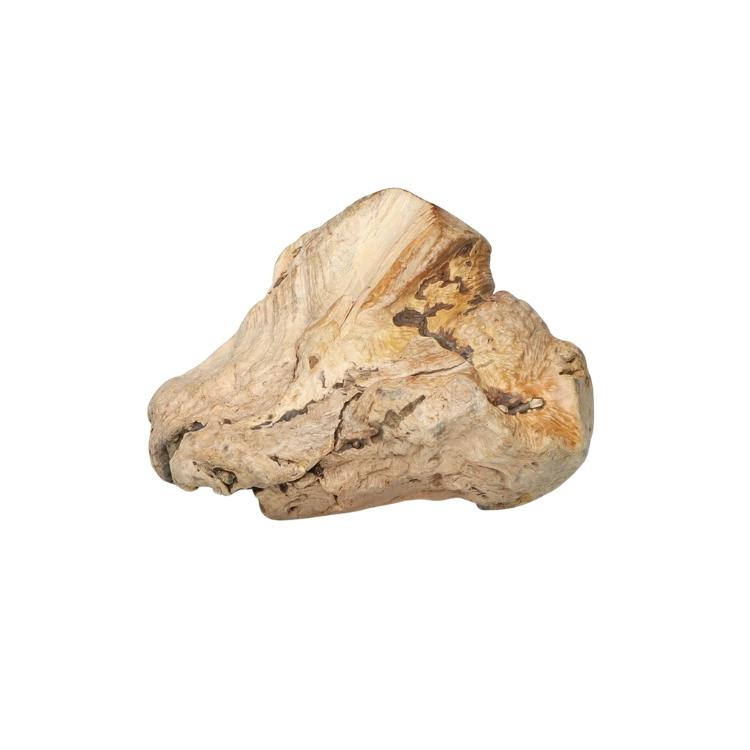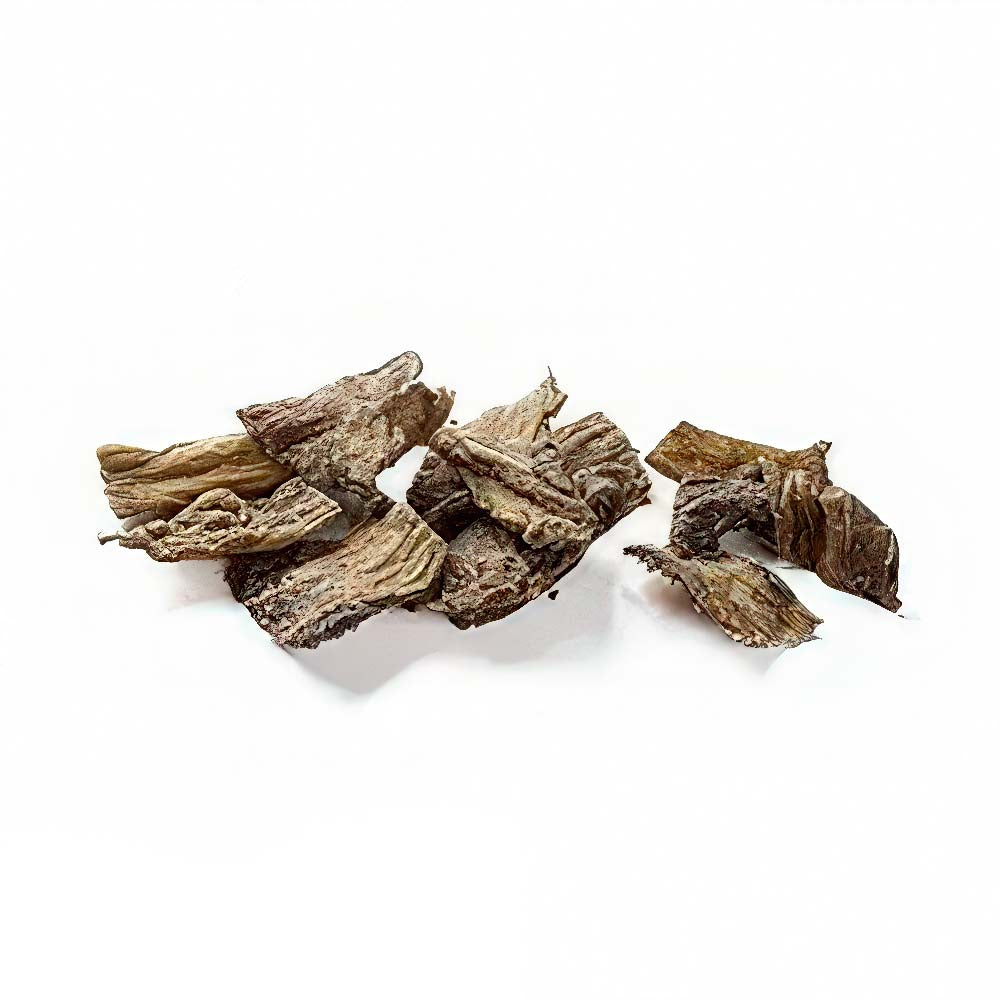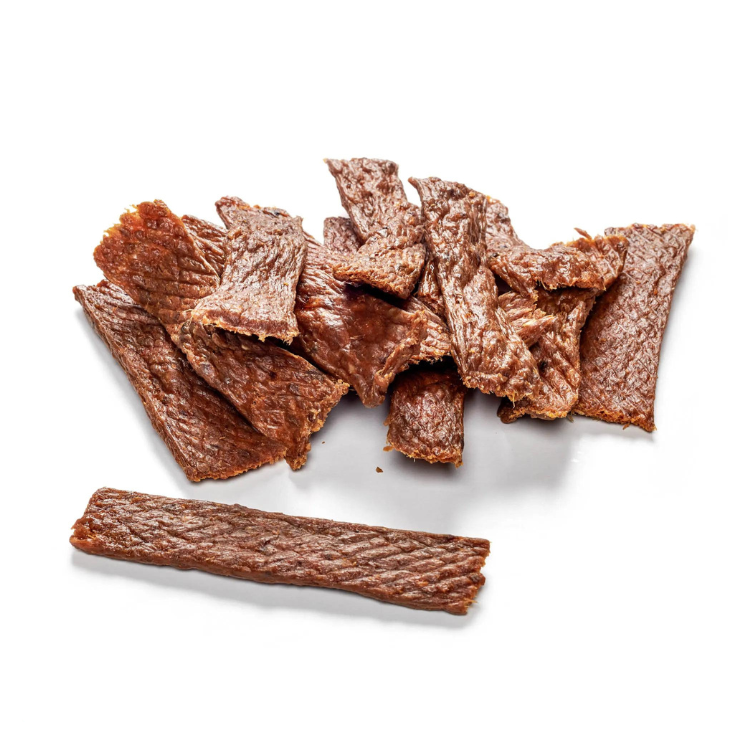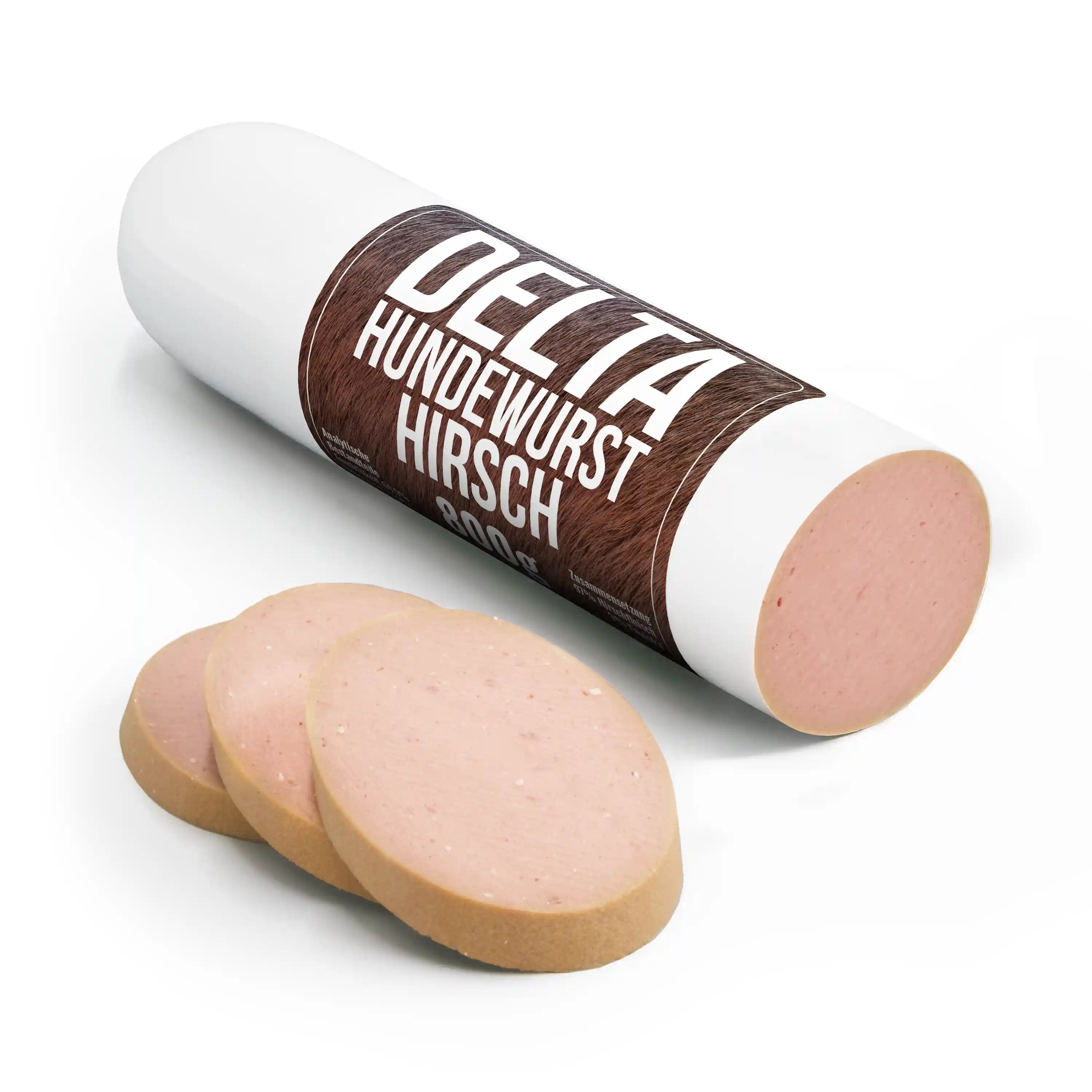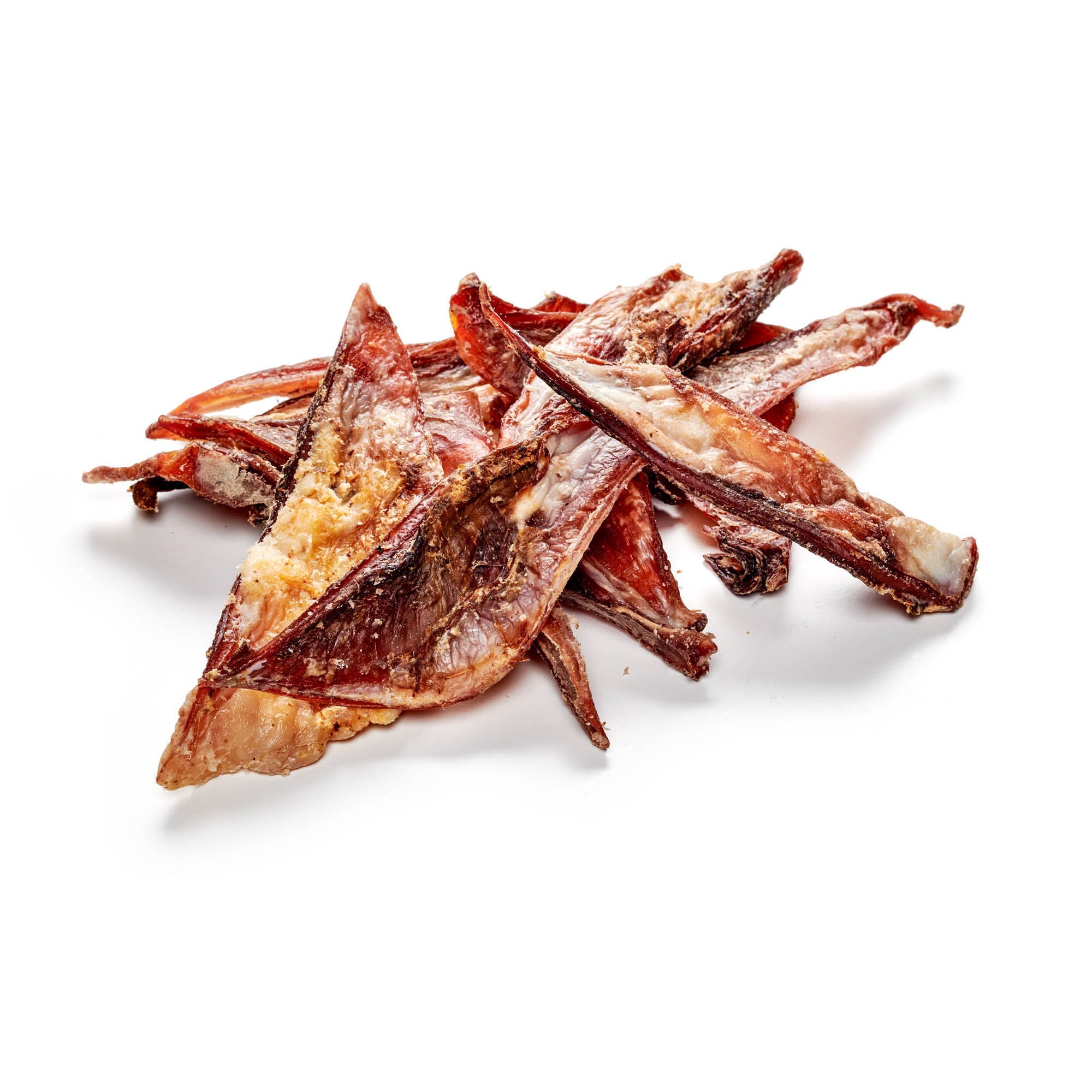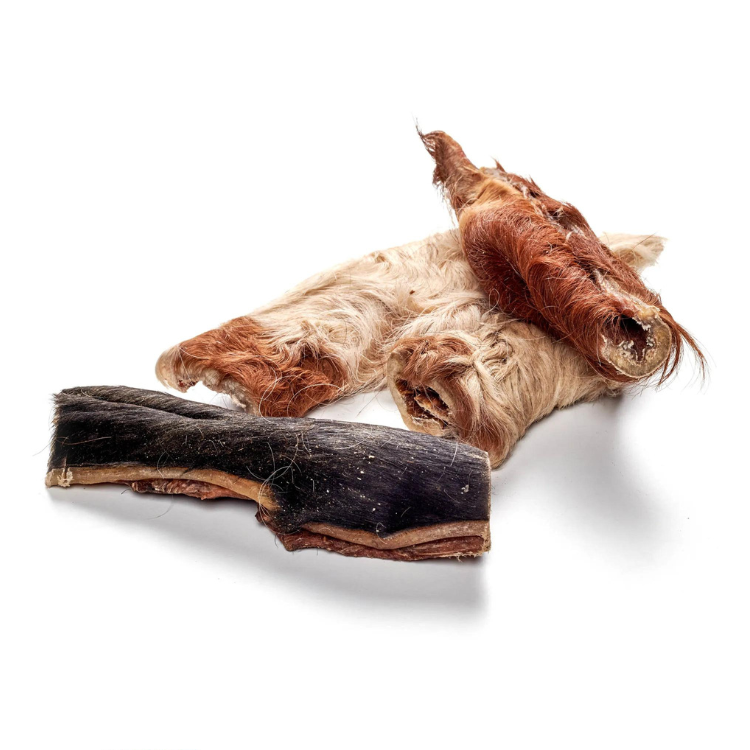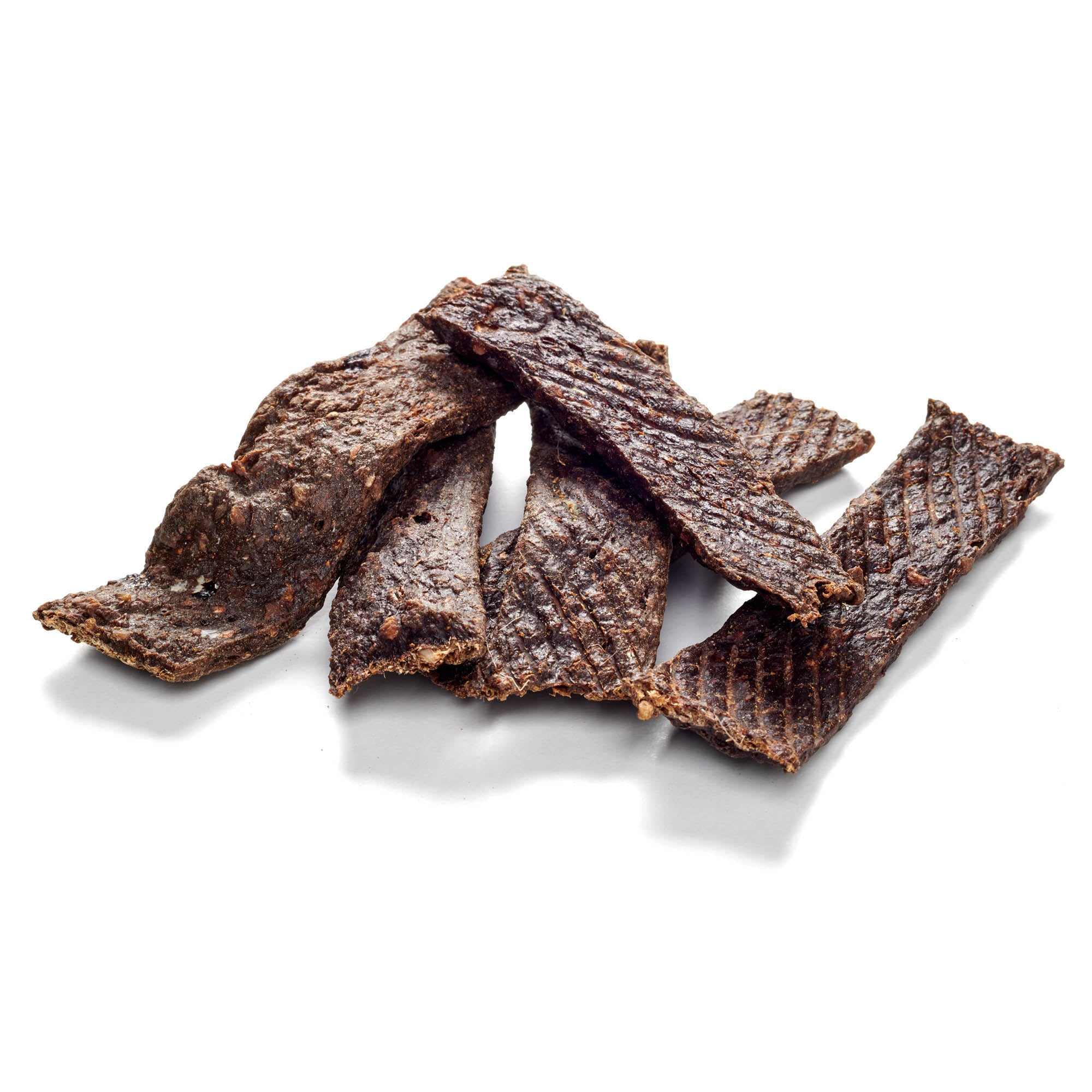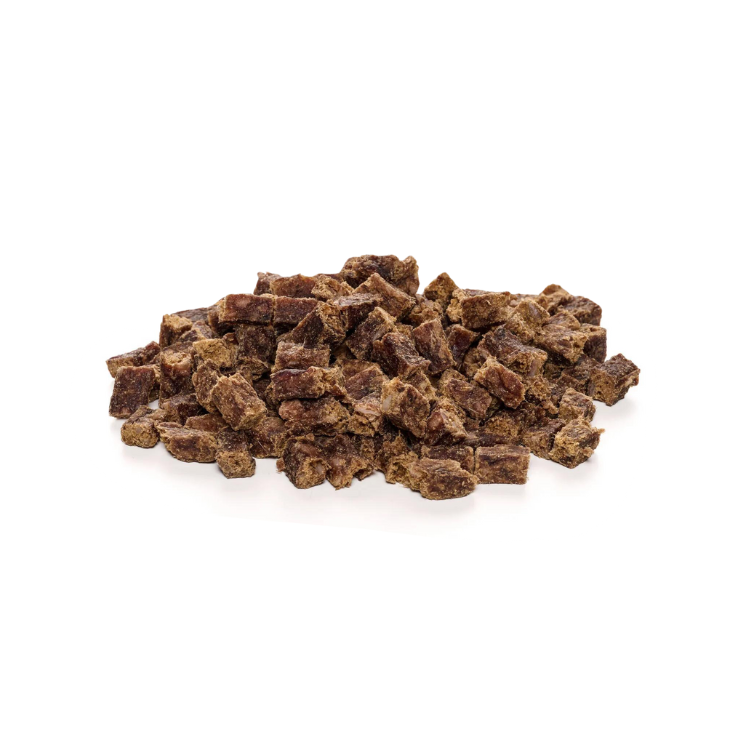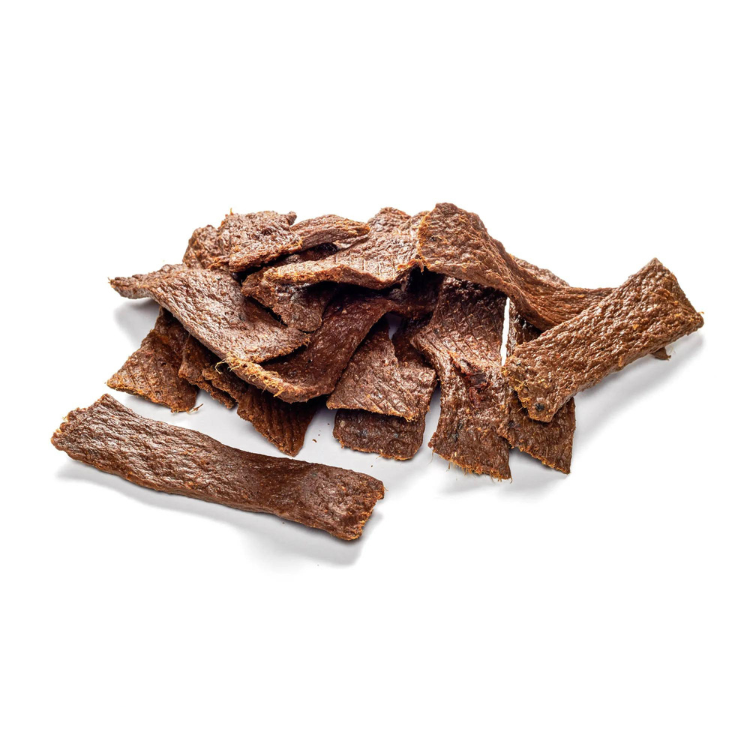
Flat Coated Retriever
Share
The Flat Coated Retriever is an active and sociable dog that is particularly suitable for beginners and families. It is easy to train and loves children. However, owners must meet its high need for exercise in order to have it as a loyal and affectionate companion.
Content: Flat Coated Retriever
- profile
- Special features
- Nutrition
- Health and care
- The right accessories
- Origin & History
- Conclusion
Discover the range of dog snacks in our store!
Flat Coated Retriever - Profile
- Character: Optimistic, friendly, intelligent
- Size: Large
- Height: 39-50cm
- Weight: 25-36 kg
- Life expectancy: 10 -14 years
- Coat type: Long, shiny
- Colour: Shiny black or liver (brown) coat
- Special features: Lively, intelligent, loves water, strong retrieving instinct
- FCI Group: Retrievers, Flushing Dogs and Water Dogs
Flat Coated Retriever - Special Characteristics
The Flat Coated Retriever, recognized by the FCI in Group 8, Section 1 of the Retrievers , comes from Great Britain, the homeland of the Labrador and Golden Retriever, to which it is closely related. Its muscular, robust body is reminiscent of the Labrador, while its narrow, elongated head and medium-length, smooth coat give it an elegant appearance. It comes in black or brown, although lighter coat colors are not permitted for breeding. Despite being called a hunting dog, the retriever's main task was never hunting and killing, but retrieving shot game. This is reflected in its name, which is derived from the English "to retrieve" meaning "to bring" or "to bring back". During breeding, particular emphasis was placed on the fact that the dogs enjoy swimming, for example to retrieve ducks from bodies of water. While Labradors and Golden Retrievers are among the most popular family dogs, the Flat Coated Retriever remains a rarer breed. But in terms of positive characteristics, he is in no way inferior to his relatives. The breed is naturally friendly and good-natured towards people and other dogs. He loves children, is playful and very affectionate towards his owners. Due to his friendly nature towards strangers, however, he is less suitable as a guard dog.
Flat Coated Retriever - What should you consider when feeding them?
A dog rarely pays attention to its line and usually gratefully accepts every dog treat and always eats its bowl empty. It is your responsibility to occasionally resist the faithful dog look when begging for food in order to avoid obesity and the associated health problems. If your retriever is physically active, it needs additional energy, depending on the intensity of its activities. According to the breed standard, healthy males should weigh between 27 and 36 kg, females between 25 and 32 kg. You can feel your dog's ideal weight by looking at the chest: the ribs should not be noticeable with gentle pressure, but they should be able to be felt and counted with light pressure. There are no breed-specific requirements for the composition of the food. Age, activity and special needs such as puppies or seniors are crucial. When it comes to ready-made food, pay attention to the ingredients list to make sure that it consists mainly of meat and does not contain too many unhealthy additives.
Reward your best friend with our dog treats!
Flat Coated Retriever - Health and Care
The Flat Coated Retriever requires little care. The coat should be brushed once or twice a week to avoid matting. Regular checks of the teeth , ears and claws are important. There are no breed-specific diseases that occur frequently, apart from goniodysplasia and tumor formation.
Flat Coated Retriever - The right accessories
To groom your Flat Coated Retriever, you will basically need a brush and a comb. Depending on the activities you plan to do with him, there are also special harnesses and leashes that may be more suitable than regular leashes. If you want to keep your retriever happy, retrieving toys such as water dummies are an excellent choice.
Flat Coated Retriever - Origin & History
The Flat Coated Retriever from Great Britain was recognized by the FCI in 1954 after being bred for over a hundred years. In the 18th century, dogs of the Small Newfoundland breed came to England with sailors and were crossed with local breeds, including setters, collies and spaniels, to develop the Flat Coated Retriever. Around 1900, it became very popular in England due to its elegant appearance and its skills as a hunting companion, being able to retrieve shot prey in difficult terrain on land and in water. Later, the breed became less common while Labradors and Golden Retrievers gained popularity, and after World War II, the Flat Coated Retriever was even threatened with extinction.
Flat Coated Retriever - Conclusion
>The Flat Coated Retriever is a low-maintenance breed. Their smooth coat requires only occasional brushing, and they are generally hardy and healthy. In terms of health issues, they are less prone to breed-specific diseases, making them a relatively low-maintenance breed. These dogs are affectionate, friendly, and excellent companions for active families.
Reward your dog with our high-quality chew products!

